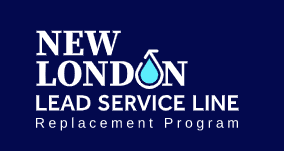Do you have a lead service line?
Search for your address in our map. You’ll be able to see the likelihood that your residence has a lead-service line, along with other relevant information.

Search for your address in our map. You’ll be able to see the likelihood that your residence has a lead-service line, along with other relevant information.
Please reference this guide for critical information throughout your lead service line replacement
Learn how to perform an at-home test your water service line for lead and send us a report
We are ready to work with you to answer your questions
Learn more about upcoming public meetings, the project timeline, and recording of past public meetings
NLPU and its contractor will schedule a site visit 10-14 days before construction. At this visit, final confirmation of service line material will occur, and a video of existing conditions will be taken. The property owner (or their representative 18 years or older) must be on site during this visit, and the water meter and service line must be accessible.
The contractor will be digging at the curb stop in the grass terrace and sidewalk area. To minimize digging, the contractor may use trenchless methods between the curb stop and your home. The contractor will flush your new water service line through an outside spigot to remove any debris or sediment after construction. You still need to follow the flushing protocol for indoor taps. The contractor will restore any disturbed grass and/or concrete areas near the curb stop. Concrete restoration may happen later.
We are ready to work with you to answer your questions about water quality and help reduce lead exposure.
Yes. New London Public Utilities (NLPU) is committed to providing a safe source of drinking water to its residents, and our staff works hard to keep that commitment. NLPU treats, tests, and distributes high quality drinking water to you and the community. Water provided by NLPU is lead-free when it leaves our treatment plant, and NLPU water mains (the pipes that distribute water throughout the community) are not made of lead. After water leaves the NLPU water main, however, it may be exposed to lead as it flows through the water service line and into in-home plumbing and fixtures. Not all homes contain lead service lines or fixtures, but many especially older homes do. If your home was built before 1986, its service line may be made of lead. Make sure that any plumbing fixtures you install are certified to be lead-free.
Aservice lineis a pipe that connects the water main in the street to household plumbing. In New London, NLPU owns the portion of it from the water main in the street to the curb box valve (outside the home) and it is owned by the property owner from the curb box valve into the residence. Although lead levels in New London have not exceeded safety standards, there is still potential for lead to enter the drinking water through lead service lines. This program works proactively to eliminate that risk. Elevated lead levels, if present, can cause serious health problems, especially for pregnant women and young children.
Swab Testing includes:
Test Pits include :
Lead service lines are anticipated to be progressively replaced over the course of this multi-year program. NLPU worked with the state to develop a plan that addresses the most at-risk areas of the city first. Phase 1A will begin in early 2024, followed by Phase 1B shortly after. Pending funding availability, Phase 2 is anticipated to begin in 2025 and Phase 3 in 2026. Visit LeadFreeNewLondon.com to see which phase your home is part of.
Replacing the service line usually involves digging a trench from the street. The new copper service line will enter through the floor or the wall and connect to your existing plumbing at the first water shut-off valve. A lead service line replacement is usually completed in one day; water will be unavailable for up to 10 hours during construction. At the end of the day, any holes from construction in the area around the new water service entry will be resealed. Construction crews will return at a later date to restore lawn areas, concrete sidewalks, and the road. If the replacement is occurring in conjunction with another capital improvement project on your street, details may be different.
Resources to understand and reduce lead exposure from the United States Environmental Protection Agency: epa.gov/lead
Lead Hotline - Contact the National Lead Information Center's hotline at
1 (800) 424-LEAD [5323]
New London Public Utilities (NLPU) is committed to providing a safe source of drinking water to its residents, and our staff work hard to keep that commitment. Because property owners in New London own a portion of their water service lines, there is a shared responsibility to manage lead exposure. We are ready to work with you to answer your questions about water quality and help reduce lead exposure.
NLPU offers the following additional state and national resources for you to learn more about lead and drinking water safety:
Lead Hotline – Contact the National Lead Information Center's hotline at 1 (800) 424-LEAD [5323]
The next open house is still being planned. Stay tuned for details.

Amy Anderson
Program Manager

Kate Edwards
Public Outreach Coordinator

Joseph Lanzafame
Director of Public Utilities

Sofia Lee
Inspector